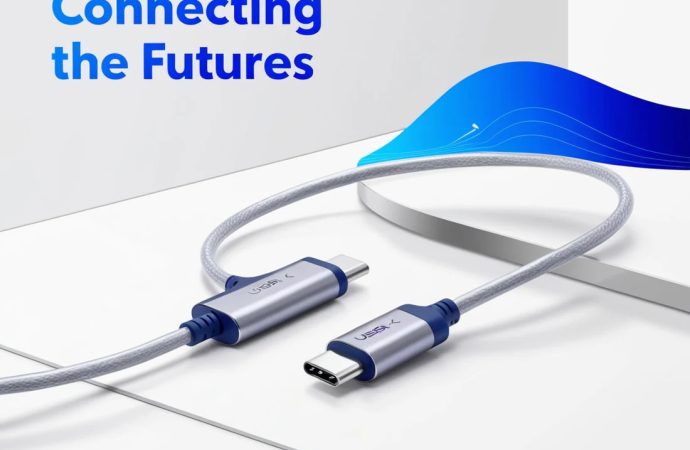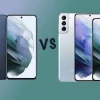Introduction The development of technology in the current digital environment has given rise to many connectivity possibilities. USB (Universal Serial Bus) became known as the standard for data transfer and charging among the various ports available. With an increasing use of advanced technologies, USB-C is swiftly becoming the current standard for many devices, including smartphones and laptops.
Introduction
The development of technology in the current digital environment has given rise to many connectivity possibilities. USB (Universal Serial Bus) became known as the standard for data transfer and charging among the various ports available. With an increasing use of advanced technologies, USB-C is swiftly becoming the current standard for many devices, including smartphones and laptops. Still, many people continue to depend on older machinery that use USB-B ports, mainly printers. This article will examine the technical details of USB-C to USB-B printer cables, their importance, and their role in allowing effortless connection in a more networked environment.
What Is a USB-C to USB-B Printer Cable?
A USB-C to USB-B cable is a connector that allows a modern USB-C device, like a laptop, smartphone, or tablet, to communicate with devices that use a USB-B port, such as printers, scanners, and external hard drives.
Here’s a simple breakdown:
- USB-C is the new, small, oval-shaped port found on most modern laptops, tablets, and phones. It supports fast data transfer and charging.
- USB-B is the square-shaped port with slight curves on top, found mostly on printers and some older devices.
The cable has a USB-C plug on one end and a USB-B plug on the other. You plug the USB-C end into your laptop and the USB-B end into the printer. It’s that easy.
Recognizing USB Devices
When exploring the specifics of USB-C to USB-B printer connections, it is important to be familiar with the various forms of USB connectors.
- USB-A: the standard rectangular connector typically located on PCs and charging adapters. It is usually used for interfacing with devices that include keyboards and mouse.
- USB-B: Commonly utilized for printers and other large gadgets. This connector is square with beveled edges, engineered for more stability in connection.
- USB-C: A modern, reversible connector that is more compact and facilitates quicker data transfer and charging. It is rapidly becoming the global standard for devices, including computers, smartphones, and tablets.
As USB-C becomes more common, users are looking for methods to connect their past USB-B devices, particularly printers, to modern technology.
Importance of USB-C to USB-B Printer Cables
As technology advances, the requirement for connectivity between classic and modern electronics becomes important. USB-C to USB-B printer cables fulfill this specific function. Here are multiple reasons why these wires are essential:
- Compatibility: A large percentage of customers continue to depend on outdated printers employing USB-B ports. A USB-C to USB-B cable facilitates the connection of older printers to current laptops and PCs equipped only with USB-C ports. This compatibility ensures that consumers are not required to replace functional printers only because of connectivity problems.
- Convenience and Portability: USB-C connectors are more compact and adaptable than their forerunners. As laptops and devices become more streamlined, they increasingly exclude larger USB-A connections in favor of USB-C. A USB-C to USB-B cable enables consumers to utilize their printers conveniently without the necessity for cumbersome adapters or dongles.
- Future Proofing: As the industry carefully changes to USB-C, investing in USB-C to USB-B cables helps to future-proof your setup. These cables ensure that as you improve your devices, your current ports remain functionally efficient.
- High speed transfers of data: USB-C facilitates higher data transmission rates in comparison to USB-B. The data transfer speed of USB-B typically reaches 480 Mbps (USB 2.0), but USB-C allows for speeds up to 10 Gbps (USB 3.1) or greater with USB 3.2 and USB4. While printers may not regularly use these speeds, having a USB-C to USB-B cable provides availability for devices that can.
How to Choose the Right USB-C to USB-B Printer Cable
When choosing a USB-C to USB-B printer cable, take into account the following factors:
- Cable Length: Select a length that is suitable for your setup. USB cables are available for various lengths, from many meters to more than ten feet. Check that the cable will properly extend from your printer to your PC without excessive stress.
- Build Quality: Select cables that are securely designed for sure durability. Pursue features like stronger connectors and better shielding, which can reduce interference and increase the cable’s longevity.
- Data Transfer Velocity: If speed is paramount, check that the cable is suitable with USB 3.0 or superior. This is particularly important if you regularly print large files or require rapid communication between your computer and printer.
- Brand Excellence: Get cables from highly regarded businesses that promise durability and efficacy. Studying reviews and analyzing product ratings can facilitate a process of informed choice-making.
Impacts of USB-C Technology
The transition to USB-C technology extends above cables; it represents a major shift in our thought of connectivity and adaptability. Here are few major consequences:
- Decreased Electronic Waste: Using USB-C to USB-B cables helps consumers to increase the lifespan of their current gadgets, therefore reducing their need for early replacements. This can reduce technological waste, an increasing issue in our technology-centric society.
- Improved Connectivity: As an increasing number of devices accept USB-C, the need for various connections and adapters declines. This improvement might improve the user experience and decrease complexity.
- Developments in Central Design: A standardized interface that includes USB-C motivates manufacturers to innovate in connectivity. Innovations in port design may utilize USB-C capabilities, including quicker charging, better data transfer rates, and enhanced purposes.
Advantages Over Wireless Printing
Many printers today offer wireless printing, but there are still reasons to choose a wired connection:
- Faster setup: No need for network configuration.
- More reliable: No interruptions from poor Wi-Fi signals.
- Better for large files: USB connections handle large documents and images faster.
- No need for internet: Useful if you’re working offline or in secure environments.
A USB-C to USB-B cable keeps things simple and dependable.
Eco-Friendly and Budget-Friendly
Instead of throwing away a perfectly good printer or buying new hardware, this cable lets you keep using what you already own. That reduces electronic waste and helps the environment.
Plus, it’s a smart way to save money. A single cable can keep your current setup working smoothly without extra costs.
Conclusion
In conclusion, the USB-C to USB-B printer cable acts as an important link between old and modern technology, allowing users to maintain productivity and function in a changing technological environment. As USB-C advances in the market, these cables ensure the continuing importance of older products, such as printers. With recognising their importance and selecting a suitable cable, consumers can successfully handle the transition to USB-C while maximizing the functionality of their current devices. Ultimately, it involves the smooth and effective incorporation of our digital futures.
















